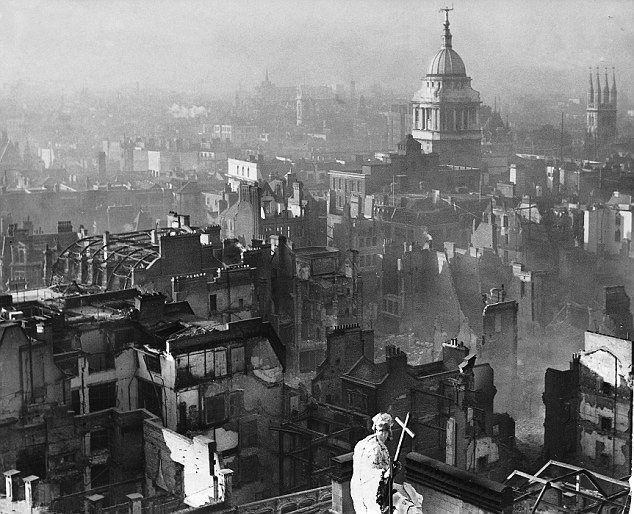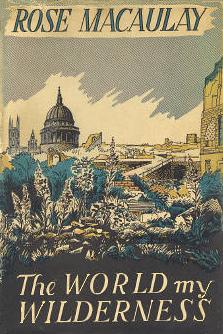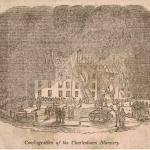Last time I wrote about the English novelist Rose Macaulay (1881-1958), arguing that she was a far more significant figure than her reputation as a comic writer might suggest. I particularly praised her book Crewe Train (1926), which was the subject of my recent Christian Century column. But Macaulay wrote over twenty other novels, several of which demand attention. One in particular here is a powerful historical document for the religious thought of the mid-twentieth century. Christian conversion – specifically, in its Anglican form – is a central motif.
Crewe Train concerned what we might call a radical nonconformist, a young woman absolutely incapable of living up to the expectations she faces about her class and her gender. She does not know and cannot learn social rules and niceties, and always prefers solitude over company of any kind, and the social whirl of other proper young ladies. The clash with her relatives drives her to a kind of damnation, where she is forced to accept their bizarre ways – a round peg brutally hammered into a square hole.
In her 1950 book The World My Wilderness, Macaulay offered another young female character in Barbary Deniston, who is so far at odds with her surroundings and family that she is close to feral. Viewing the world through her eyes – specifically the world of immediately post-WWII England – we see that society as utterly strange, hostile, and threatening. Barbary is beyond a mere outsider or loner: she is living more as an anarchist or bandit, in a state of constant resistance against conformity and propriety. The word “radical” seems barely adequate for such a picture. She is, well, a modern-day barbarian.
You can read the plot summary easily enough, but here is a lightning version. Barbary Deniston is raised in southern France during the Second World War, which teaches her life lessons about the evils of authority, and the need to resist them at all costs. Her experiences in active resistance and sabotage campaigns have made her thoroughly familiar with the dilemmas of collaboration, collusion, co-optation, and betrayal. Aged seventeen, she is brought to a heavily bombed and ruined London, which she interprets according to her wartime knowledge. However well intentioned they may seem, she thinks, all (British) authority figures are de facto occupation forces, and it is quite acceptable to steal or lie to survive. Observing the thriving subculture of thieves, spivs, black marketeers, deserters, and lowlife criminals, she assumes they are all fellow resisters and guerrillas, deserving her respect and assistance.
She establishes her own home in a bombed out church, which in turn forms part of a ruined but astonishingly beautiful city, where wild flowers grow unchecked amidst the devastation. Morally, spiritually, and physically, London is a wilderness. Much of the book reads like a post-apocalyptic science fiction story, which to a degree was the situation that England faced at this time. This is London Year Zero.
The basic ideas are startling enough, not least the anarchistic view of London, but the physical descriptions of the urban landscape are achingly lovely:
The children stood still, gazing down on a wilderness of little streets, caves and cellars, the foundations of a wrecked merchant city, grown over by green and golden fennel and ragwort, coltsfoot, purple loosestrife, rosebay willow herb, bracken, bramble and tall nettles, among which rabbits burrowed and wild cats crept and hens laid eggs.
Ruined churches dominate the landscape, sending a potent visual message about the collapse of the old religious order, as much as the city’s material destruction. The children see
empty shells of churches with their towers still strangely spiring above the wilderness, their empty window arches where green boughs pushed in, their broken pavement floors–St Vedast’s, St Alban’s, St Anne’s and St Agnes’, St Giles Cripplegate, its tower high above the rest, the ghosts of churches burnt in an earlier fire, St Olave’s and St John Zachary’s, haunting the green-flowered churchyards that bore their names
With her partner, Barbary uses her deserted church home to construct an eclectic religious system, with its rituals drawn freely from memories of Catholic France, and the rich customary semi- paganismof Provence. Barbary often recalls the words of the Dies Irae, so ideal for this landscape of Judgment and Fire. The black kitten that they place on the church altar is pleasantly surprised to find that literal animal sacrifice forms no part of their neo-pagan religious scheme: their sacrifice is strictly symbolic, and anyway, they like having kittens around. At worst, it is a Black Mass Lite.
It is helpful to read Barbary’s story in the light of Rose Macaulay’s own spiritual journey. Her strong mystical inclination contributed to her dislike of organized faith, and especially of Christianity, which she regularly satirized. Precisely in the years around 1950, however, she was drawing ever closer to Anglicanism and in its very high Anglo-Catholic form. The epigraph for The World My Wilderness comes from The Waste Land, the work of that other very high Anglo-Catholic, T. S. Eliot. In fact, The Waste Land is referenced so frequently throughout the novel that it almost seems like an extended commentary on that poem. Macaulay’s best-known novel was The Towers of Trebizond (1956), with its wonderfully-named high Anglican cleric, Canon Hugh Chantry-Pigg. The other main character is the obsessively High Church Aunt Dot, who is probably based on Dorothy Sayers.
The World My Wilderness helps us understand how she reached that improbable Anglo-Catholic destination. After all, the portrait of London suggests the vanity of human planning, and the brutal power of spiritual evil, lessons that emerged from the wartime experiences of so many of her contemporaries. For anyone of traditional aesthetic tastes, the emerging post-war world seemed thoroughly disheartening, with its threats of bland egalitarian conformity. At worst, might that future be ruled by some new Communist or Socialist order? Recall that George Orwell’s 1984 had appeared only two years earlier, in 1948, and its title represented an inversion of that present day.
Against that background, might religion be a way of recovering the best of the old order, of a now bygone Europe? In an English context, that would signal the appeal of Roman Catholicism, or of its Anglo-Catholic counterpart. Or must the world resign itself to dealing only with “empty shells of churches”?
Here is Macaulay’s account of the hardened young veteran Richmond Deniston (Richie), Barbary’s brother: the passage deserves careful reading, and re-reading:
Richie, himself trapped into barbarism for three long, unbelievable years, shrank back from it, reacted towards gentleness, towards bland tolerance, towards an excessive civility. The rich elegances of life, now so little probable, the fine decoration, the exquisite glow of colour and grace of structure, the beauty that wealth and knowledge can bring, the fineness, the ivory tower of aristocratic culture, that war and peace had undermined, had set tottering, had all but brought down with a crash, to replace by pre-fabs for the multitude, by a thin, weak, tainted mass culture–it was towards these obsolescent things that Richie nostalgically turned, pursuing their light retreating steps as one chases beloved ghosts.
In this pursuit he was impelled sometimes beyond his reasoning self, to grasp at the rich, trailing panoplies, the swinging censers, of churches from whose creeds and uses he was alien, because at least they embodied some continuance, some tradition; while cities and buildings, lovely emblems of history, fell shattered, or lost shape and line in a sprawl of common mass newness, while pastoral beauty was overrun and spoilt, while ancient communities were engulfed in the gaping maw of the beast of prey, and Europe dissolved into wavering anonymities, bitter of tongue, servile of deed, faint of heart, always treading the frail plank over the abyss, rotten-ripe for destruction, turning a slanting, doomed eye on death that waited round the corner–during all this frightening evanescence and dissolution the historic churches kept their strange courses, kept their improbable, incommunicable secret, linking the dim past with the disrupted present and intimidating future, frail, tough chain of legend, myth, and mystery, stronghold of reaction and preserved values.
Might the Church truly be the rock against which the gates of contemporary Hell could never prevail? Richie’s strong temptation is to become a Roman Catholic, but that would be very hard to explain to his family. But there was an acceptable alternative:
Anglican, then, he compromised, and that would go better with his father, suggesting to him college chapels, good glass windows, Byrd anthems, Gothic cathedrals, the Temple church, the benchers at lunch on Sundays at Lincoln’s Inn.
Of course, we can’t assume that Macaulay was speaking directly through her character, but the words do echo what we know about her own views around this time. We may not agree with the characterizations of the romanticized past, or of the stereotyped present, but it is a powerful vision, of a kind that attracted a great many individuals in the twentieth century, especially in the immediate aftermath of each of the two world wars.















